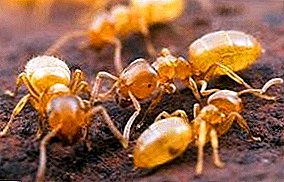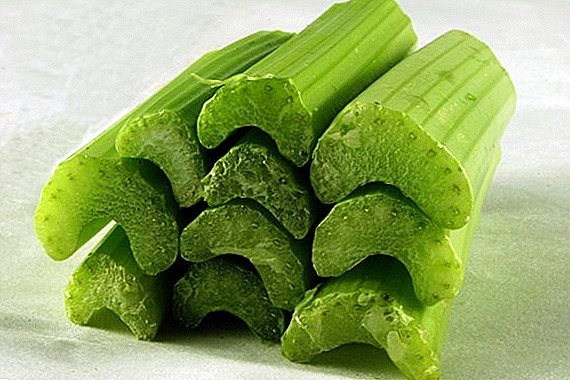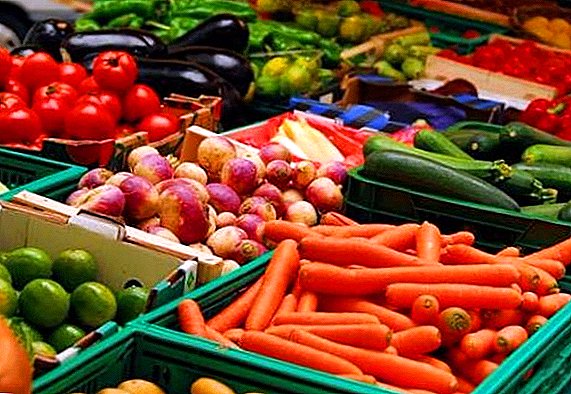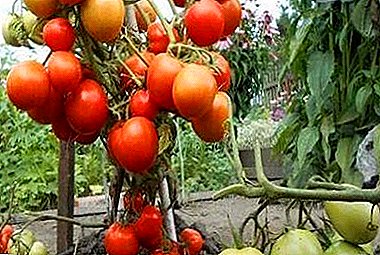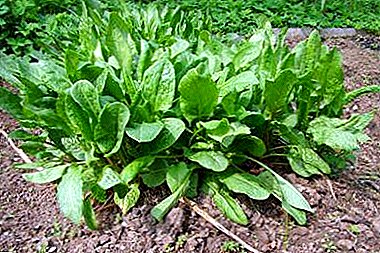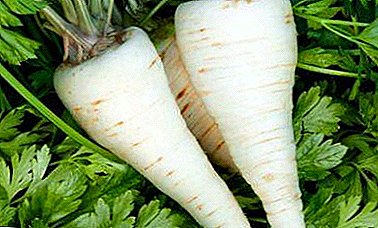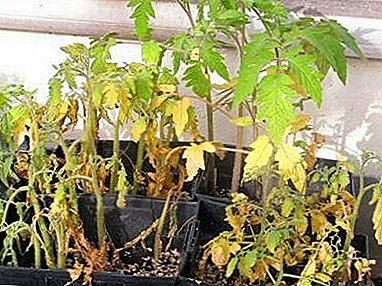
Tomatoes are a vegetable crop that requires good care and close attention. A rare gardener does not grow tomatoes in his garden. But getting a really good harvest tomato is possible only when planting properly grown seedlings.
There are a lot of difficulties when planting seedlings. It is necessary to choose the right time for planting, provide sunlight to the tomatoes, prepare the seeds correctly, observe the frequency of watering.
Tomatoes are often subject to all kinds of diseases. Therefore, you can not run seedlings, you need to carefully examine the bushes for the presence of spots, pests or other signs of the disease. What if the seedlings are frozen or frozen and not growing? All the answers in the article.
Problems and advice, what to do with them
Tomatoes - whimsical vegetable, when growing which can be faced with a number of problems. Consider some of them.
Young tomatoes are frozen
Most often, the frost returned in late spring is to blame.. Also, the cause of freezing can be the lack of hardening of seedlings, poorly prepared beds or early planting in the ground. To save the frozen seedlings is quite possible.
- In case of weak frosts, seedlings need to be warmed up.
- To do this, for each bush you need to pour at least five liters of water of natural origin (from a river, rainwater, from a well or a well).
- After watering you need to cover the tomatoes with a film in two layers.
- If the forecast predicts increased frost, then it is necessary additionally (on top of the film) to protect the seedlings with blankets or rags.
- If the seedlings are badly damaged, the leaves change color, darken, dry out or fall off, you need to act immediately.
- Emergency help will be immunomodulators. It is necessary to breed and apply them strictly according to the recipe specified on packaging.
- Pruning of all affected parts of the bush will help the seedlings to recover. It is necessary to cut off all the leaves and stems with a sharp knife. If you had to cut to the ground, it's not scary. Tomatoes will recover from the buds, sleeping at the base of the leaves or root. After pruning, sow the seedlings with fertilizer. You can use urea, potassium humate with bird droppings.
Frost-affected young tomatoes look like this:

Slowly grow house
- Slow growth of seedlings is associated with poor-quality soil or poor-quality care. Poor soil is easy to calculate. The seedlings do not grow well, the lower leaves become purple or blue. In this case, the tomatoes lack magnesium. Do not immediately change the land. It is better to use top dressing.
- Slow growth is possible even if the seedlings lack nitrogen. Oxygen does not reach the roots, because of this, tomatoes are unable to breathe. Indicate a lack of nitrogen and thin, almost transparent leaves and thin stems. Urea will help restore growth and replenish nitrogen deficiency.
- Poor care affects the seedlings no less than the composition of the soil. Excessive watering or, on the contrary, too little water affects the growth of seedlings. Lack of sunlight slows plant growth.

Are falling
Causes can happen improper care or illness. Improper care includes:
- excessive watering or lack of moisture;
- too dry air;
- seedlings cold;
- there is no fresh air.
If you find one of the items, you should urgently correct the situation. Poor quality soil may also cause the seedlings to fall. Check for pests.
Note. A common disease due to contaminated soil is fusarium.
Abundant watering and lack of freedom can lead to diseases such as “black leg” (the seedling will quickly begin to darken and wither throughout the trunk, starting from the bottom). In case the problem is noticed immediately, it is enough just to transplant the plant into a new soil. When running the case, you additionally need to apply fertilizer and fertilizer for treatment.

What is missing if the plant is light green in color?
The leaves of seedlings become light due to several reasons. This may be an abundance of moisture, lack of oxygen or heat. Can also be caused by a lack of potassium in the soil. In this case, you can feed the plants with potassium humate or other suitable fertilizer.

Frail condition
Weak seedlings can be caused by lack of sunlight.. If the weather is cloudy, it is recommended to artificially highlight the room. It is also necessary to use complex mineral fertilizers to feed the plant.

Blackleg
The disease is classified as fungal. It manifests itself by drying and darkening of the stem of a tomato. Then the plant is tilted and falls as a result.
Important. The cause of the disease is the lack of distance between seedlings, as well as abundant watering.
What to do so that a tomato does not have a black leg? Should prevent disease:
- To do this, add ash or sand to the ground.
- If the plant is already sick, then measures to combat the black leg should be using fungicides: Fitosporin-M, Baktofit, Fitolavin.
- To disinfect the earth by irrigating potassium permanganate solution. You can use blue vitriol.
- Seedlings, which have long been ill, must be destroyed.

Septoria
Infected seedlings disease through the soil. The fungus penetrates the plant through the roots.
For prevention it is necessary to decontaminate the soil with a solution of potassium permanganate. Fertilize the soil with ash and sand. Before planting seeds or planting seedlings you can soil the soil. Plants that have long been ill, must be destroyed. For the treatment of the rest of the seedlings used Bordeaux liquid treatment.

Brown spot
A sign of brown spot - light brown spots on the leaves that darken over time. The cause may be increased soil moisture and air.
To prevent the disease, it is necessary to shed the soil with a solution of potassium permanganate. Sprouts that have undergone a disease for a relatively long time should be removed. The rest of the seedlings can be treated Bordeaux liquid.

Mosaic
Serious viral disease. Resistant to frost and drought, the probability of infection is quite high. Infected seedlings can from the soil, from weeds and even from the equipment that is used for care. Carrier mosaic is also aphid.
Manifested a disease on the leaves. They are covered with mosaic spots of green or dark shade. Specific growths appear and the leaf begins to curl.
For prevention, the plant must be treated with 20% hydrochloric acid solution. Sprouts process with boric acid 0.1%. Used for the treatment of chemical drugs, such as Pharmaiod-3.

Aspermia
The disease belongs to the virus, it is mainly transmitted by insects. With the disease, the color of the tomatoes is lightened, the tops of the plant begin to curl, the leaves curl and deform.
For prevention, it is necessary to treat the plant with anti-aphid and other pests. Apply chemical preparations to the treatment. If the seedlings are already dry, they need to be destroyed..

Yellow leaves
The yellowness of the upper leaves suggests that the plant lacks calcium. It is necessary to feed. The reasons for the yellowness may be too small distance between the bushes, poor lighting, copper deficiency. If the whole bush became light yellow, then the seedlings lack manganese. Mechanical damage to the roots when picking is one of the many factors of yellowing of leaves.

Cultivation errors and their prevention
- Buying seeds in unfamiliar places. In the market or at the grandmother on the road, you can buy seeds of poor quality. With this purchase, you need to soak the seeds in a solution of potassium permanganate and leave for 20 minutes. Then rinse with water. If the seeds darken, then everything is in order.
- Long soak. No need to soak the seeds for more than 15 hours. Otherwise they will simply suffocate.
- Incorrect landing time. Too early or late planting will affect the quality of the tomato. Ideal seedlings for planting in the ground - from forty to sixty days. Do not plant seeds, if after two months of heat is not expected.
- Landing in the garden soil. The mixture should be harvested from the fall. It can be made of sand and humus, compost or soil from the forest - in equal shares. In addition, a bucket of the mixture should go 0.5 liters of wood ash.
- Lowering the temperature. After planting the seeds, the temperature should be maintained at + 25 ° C. Only in this case, seedlings will quickly appear.
- Lack of sun. As soon as the seedlings appeared, it is necessary to put the pots in a place where the maximum amount of sunlight is provided.
- Excessive watering. Watering is necessary when the top layer of soil dries. Every time after watering it is necessary to loosen the ground.
- Tightness. Tomatoes love freedom. Do not plant them too close to each other. Plant leaves should not touch.
- No hardening. Two weeks before transplanting into open ground, it is necessary to take it out every day to the street or balcony. Increase time gradually until the whole day. The day before the landing leave on the street at night.
We offer to watch the video, which details the main mistakes in the cultivation of tomato seedlings:
Growing seedlings juicy and appetizing tomatoes on their own is not so difficult. The main thing is to properly care for and not make mistakes when planting and leaving. And then a huge and high-quality harvest will delight their owners.


